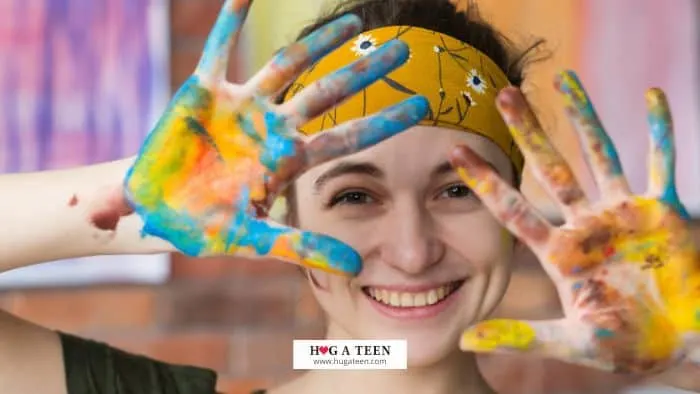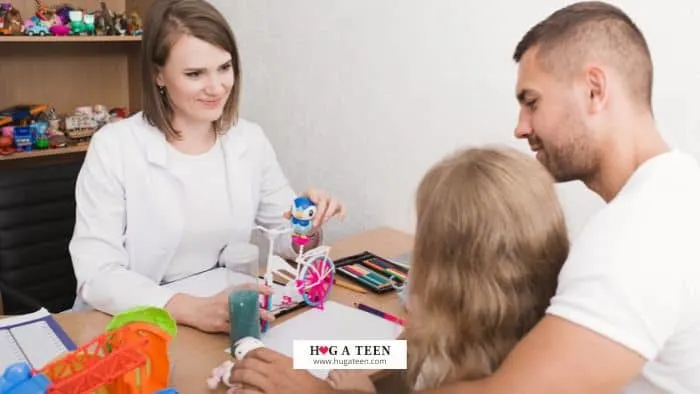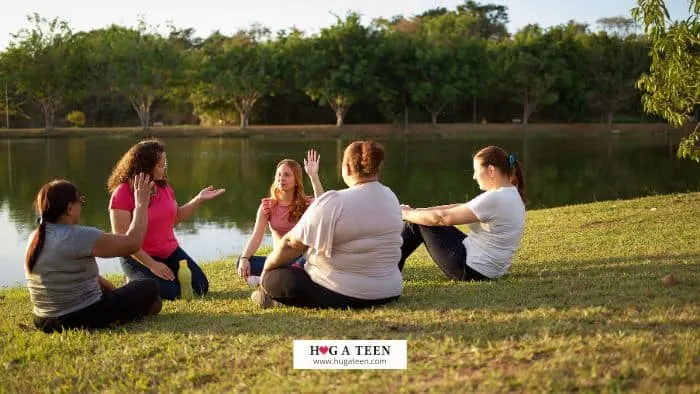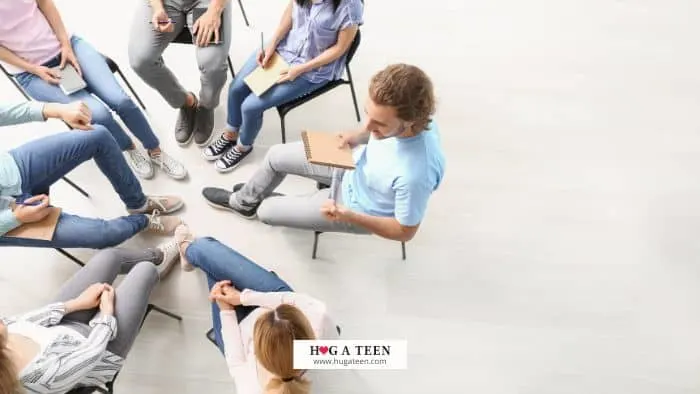Engaging in therapy can be a challenging process, especially for teenagers and tweens who may find it difficult to express their emotions and communicate their needs. However, therapy games and activities can provide a fun and interactive way for young individuals to develop crucial social and communication skills while also addressing their mental health challenges.
Therapy games and activities offer an inclusive and productive approach to help teens and tweens navigate their mental health challenges.
Whether it be through individual activities, board games, or specialized resources like art therapy and music therapy activities, these therapeutic games provide a platform for self-exploration and creative expression, enhancing important coping skills and fostering positive relationships.
Benefits Of Therapy Games

Therapy games offer a unique and valuable approach to addressing mental health challenges and promoting the well-being of teens and tweens. These interactive activities have proven to be effective in creating a safe and open space for clients of all ages to express their emotions, build essential skills, and process unresolved issues or trauma.
One of the significant benefits of therapy games is their ability to enhance assessment. Through games, therapists can observe and evaluate a client’s emotional expression, communication abilities, and problem-solving skills in a non-threatening environment. This information allows therapists to tailor their treatment approach to the client’s specific needs.
Therapy games can also facilitate family bonding and communication. Many therapy games are specifically designed to be played by multiple individuals, including family members. These games promote healthy dialogue and offer an opportunity for families to work on their relationships while addressing individual challenges.
In addition to emotional expression, therapy games can help clients develop important life skills. Many games incorporate elements of problem-solving, conflict resolution, decision-making, and teamwork. By engaging in these activities, teens and tweens can practice and strengthen these skills, which are essential for their personal growth and success.
Furthermore, therapy games often utilize metaphors and visual representations to help clients understand and process complex emotional experiences or trauma. These metaphors can provide a framework for deeper exploration and healing, allowing individuals to gain insights and find meaning in their experiences.
Creative Therapy Games and Activities For Teens

Creative teen therapy games and activities offer engaging and interactive ways for adolescents to express themselves, build essential skills, and address mental health challenges.
These games provide a safe and supportive environment for teens to explore difficult emotions, develop coping strategies, and enhance communication and social skills.
By incorporating elements of art, music, and recreation, creative therapy games offer a unique approach to therapy that can be both enjoyable and effective for teen clients.
Whether through expressive arts, role-playing, or problem-solving activities, these games provide a valuable resource for therapists to engage and empower teens in their therapeutic journey.
❤️ You might also enjoy the Gartic Phone Game
1. Candy game
The Candy game is a highly engaging therapy activity specifically designed for teens and adolescents to help them open up and express their emotions in a safe and supportive environment. It uses colorful candy as a visual representation of different emotions, making it both enjoyable and effective.
To play the Candy game, each client and the therapist will need a small bag of colorful candy. Each color will correspond to a specific emotion. For example, red can represent anger, blue can represent sadness, yellow can represent happiness, and so on.
During the game, the therapist can ask open-ended questions or provide prompts related to various emotions. For instance, they may ask the teens to share a time when they felt angry or a situation that made them happy. The clients can then choose a candy that corresponds to their emotions and share their thoughts and experiences.
This interactive therapy activity enables teens to explore and express their emotions, develop communication skills, and enhance emotional regulation. It also encourages reflection and enables the therapist to gain valuable insights into the teen’s emotional well-being.
The Candy game is a wonderful tool in therapy sessions, as it provides an inclusive and interactive way for teens to engage in the therapy process. It promotes self-exploration and creative expression, enabling teens to develop valuable coping skills and enhance their self-esteem and communication skills.
2. Exploding balloons
Exploding Balloons is a therapy activity specifically designed to address anger issues in teens and adolescents. This engaging activity allows clients to explore and manage their anger in a fun and interactive way.
The therapist explains to the client that they will be exploring situations that made them angry while the therapist blows air into a balloon. This symbolizes the buildup of anger within oneself. The therapist keeps blowing air into the balloon until it pops.
The therapist emphasizes the concept that holding onto anger can lead to various problems in life, such as difficulty in relationships or a negative impact on mental health. By visually representing anger with a balloon filled with air, the teenager can better understand the consequences of holding onto anger.
In the next phase of the activity, the teen holds the filled balloon. The therapist asks the teen to talk about the situations that made them angry. As they talk about their anger, they should let a little air out of the balloon. This action represents the healthy expression and release of anger. As the teen shares their experiences and feelings, the balloon gradually deflates. Remind them that the balloon didn’t pop because they were able to talk about their feelings, preventing escalation.
By engaging in Exploding Balloons, teens and adolescents are encouraged to explore and manage their anger in a safe and controlled environment. It provides an opportunity for self-reflection and teaches valuable anger management skills. This therapy activity helps clients develop coping strategies and gain a better understanding of their emotions, ultimately contributing to their overall emotional well-being.
3. Board games
Board games can be incredibly beneficial in therapy sessions for teens and tweens, as they provide a fun and engaging way to promote skill development and growth. These games offer a unique therapeutic tool for addressing various emotional and behavioral challenges.
One key benefit of using board games in therapy is the promotion of impulse control. Many board games require players to take turns, follow rules, and make thoughtful decisions. By engaging in these activities, teens and tweens learn how to regulate their impulses, delay gratification, and consider the consequences of their actions. This skill is particularly useful in managing impulsive behaviors and making better choices in real-life situations.
Another important skill that board games can help develop is social thinking. Playing board games involves interacting with others, communicating, and taking into account the thoughts and perspectives of others. These games encourage teens and tweens to consider the impact of their actions on the group and develop empathy and understanding. Through this process, individuals can enhance their social skills, improve their ability to cooperate, and build positive relationships with others.
Board games also promote perspective-taking, allowing teens and tweens to step into the shoes of different characters or navigate various scenarios. This fosters the development of empathy, as they gain a deeper understanding of different viewpoints and experiences. By engaging in these activities, individuals can broaden their perspective, gain insights into their own thoughts and behaviors, and develop more flexible thinking patterns.
Examples of board games that are effective for therapeutic play include “The Settlers of Catan” for promoting strategy and negotiation skills, “Codenames” for enhancing communication and teamwork, and “Guess Who?” for practicing perspective-taking and deductive reasoning. Each game offers unique opportunities for skill development within a therapeutic setting.
Overall, board games provide an enjoyable and interactive way to address important skills such as impulse control, social thinking, and perspective-taking in therapy sessions for teens and tweens. By incorporating these games into therapeutic activities, therapists can create engaging and effective interventions that support the growth and development of their clients.
🤓 You might also enjoy these fun games to play with 3 people.

4. Yoga
Yoga can be an incredibly beneficial tool when incorporated into therapy sessions for teens and tweens. Not only does it provide physical activity, but it also offers a variety of mental and emotional benefits.
One key advantage of integrating yoga into therapy sessions is the enhanced self-awareness it fosters. Through the practice of yoga, adolescents are encouraged to connect with their bodies, thoughts, and emotions on a deeper level. This self-reflection allows them to gain a better understanding of themselves and their individual experiences. As a result, they can develop a stronger sense of self, leading to improved self-esteem and self-confidence.
Additionally, yoga can induce a sense of calmness and relaxation, making it an effective tool for managing anxiety disorders and stress. The rhythmic breathing techniques and gentle movements in yoga can help regulate the autonomic nervous system, reducing anxiety and promoting relaxation. This can be especially valuable for teens dealing with the pressures and challenges of school, social relationships, and other aspects of their lives.
Incorporating yoga into therapy sessions can be done in creative ways. In-person sessions can utilize yoga mats, soothing music, and guided meditation to create a calming and peaceful environment. Teletherapy sessions can involve screen sharing a Cosmic Kids Yoga video, enabling the therapist and teen to practice yoga together virtually. This allows for the benefits of yoga to be experienced even when face-to-face interactions are not possible.
By incorporating yoga into therapy sessions, therapists can provide teens and tweens with effective coping skills for managing their emotions and navigating the challenges of adolescence. The combination of physical movement, mindfulness, and self-reflection that yoga offers can be a powerful tool for promoting mental and emotional well-being.
5. Gratitude mapping
Gratitude mapping is a beneficial activity that can be incorporated into therapy sessions for teens to help them recognize and appreciate the positive aspects of their lives. This activity encourages adolescents to shift their focus from negative thoughts and emotions towards gratitude, fostering a sense of positivity and well-being.
To set up and facilitate the gratitude mapping activity, start by forming small groups of teens. Provide each group with a large piece of paper or a dry-erase board and writing materials. Instruct them to brainstorm and write down things they are grateful for in their lives. This can include anything from supportive friends and family to personal achievements and positive experiences.
Once the teens have compiled their individual lists, encourage them to connect the ideas on the paper or board, drawing lines and creating a visual representation of the connections between different aspects of gratitude. This mapping exercise allows them to see how various positive aspects of their lives are interconnected, reinforcing the idea that even amidst challenges, there are still things to be grateful for.
Gratitude mapping can have a profound impact on teens’ self-esteem and confidence. By focusing on the positive aspects of their lives, they can develop a greater appreciation for their own strengths and accomplishments. This shift in perspective can lead to increased self-esteem and confidence, allowing teens to navigate their mental health challenges with a more positive outlook.

6. Identifying strengths
One therapeutic activity that can help teens identify and recognize their psychological and character strengths is called “Spot the Strength.” This group activity provides a supportive space for teens to share positive stories or achievements while also allowing others to identify and acknowledge their strengths.
To begin the activity, form a group of five to eight teens sitting in a circle. Each teen will take turns sharing a positive story or an achievement from their lives, whether big or small. As the stories are shared, instruct the other group members to actively listen and make notes of the strengths they identify in each story.
Once all the stories have been shared, facilitate a feedback session where all group members can openly share the strengths they observed in each story. This can be done by going around the circle and allowing each person to provide their feedback. Encourage discussion and ask questions to deepen the understanding of these strengths.
By engaging in the “Spot the Strength” activity, teens not only gain awareness of their own strengths but also learn to recognize and appreciate the strengths of their peers. This activity promotes a positive and supportive environment, where all participants can uplift and encourage one another, fostering a sense of community and empowerment.
🤓 You might also enjoy these camp games for teens.
7. Letter to self
The “Letter to Self” therapeutic activity is a powerful tool in helping teens gain a new perspective on their emotions and build confidence in their current situation. This activity invites teens to imagine themselves as adults in the future and write a letter from their future self to their present self.
To begin the activity, ask them to envision themselves as the person they hope to become in the future. Encourage them to think about their goals, dreams, and aspirations. Then, provide them with a piece of paper and ask them to write a letter to their present self, offering advice, support, and encouragement.
This activity serves as a way for teens to reflect on their current challenges, as well as recognize their strengths and abilities. By taking on the perspective of their future self, they can gain insight into their current emotions and cultivate a sense of hope and resilience.
Writing this letter provides an opportunity for teens to express their emotions and feelings in a safe and non-judgmental way. It allows them to validate their experiences and explore different ways to cope with their current struggles.
Incorporating the “Letter to Self” activity into therapy sessions allows for exploration and expression of feelings, as well as fostering a positive relationship between the client and therapist. It is an effective and empowering therapeutic game that can support teens in their journey toward improved mental health and well-being.
8. Feelings in the Body
Introducing the concept of “Feelings in the Body” to teenagers can be a powerful tool in helping them understand and regulate their emotions. By explaining that emotions are not only experienced in the mind but also felt in the body, teens can gain a deeper understanding of their emotional experiences.
One effective way to explore this concept is by using a Feelings Pictionary game. This game not only encourages teens to express their emotions but also promotes building rapport and open communication.
During the game, prompt the teens to draw a feeling they experienced that day or how their body feels during a panic attack. This activity not only helps them identify and express their emotions, but it also provides them with a safe space to explore their bodily symptoms and learn valuable coping skills.
Providing teens with a platform to express themselves can be an important step in their therapy process. By incorporating activities such as Feelings Pictionary, therapists can support teens in developing emotional regulation skills, communication skills, and a deeper understanding of their own experiences.
9. Red and Green Activities
Red and Green Activities are a valuable concept in therapy games for teens, as they promote flow states (the experience of being completely absorbed and immersed in a task) and contribute to good psychological health.
To help teens experience more flow states, identify leisure activities that make them feel good.
This exercise encourages teens to reflect daily on their strengths, allowing them to exercise them more.
Green activities include:
- things you really enjoyed doing
- things that make you feel energized
- activities where you forgot the time
- things you genuinely look forward to
- activities that you can do well even when under pressure
Red activities include:
- things they don’t enjoy doing
- activities that deplete them of energy
- things that feel like they take forever to complete
- activities that you dread
- things that stress you out even just thinking about them
Afterward, ask them to recall each of their daily activities and assign them to a “Red” or “Green” category.
By implementing Red and Green Activities in therapy games for teens, therapists can create a vision board of a teen’s strengths and weaknesses and help them find and focus their energy on activities that can lead to their overall mental health and well-being.
10. Changing Negative Thoughts
In the journey of therapy, changing negative thoughts is a crucial step towards building a healthier mindset and improving overall well-being. Red and Green Activities offers a dynamic and interactive therapy game designed specifically for teenagers to address faulty thinking and reverse unhelpful patterns.
The game starts by guiding teens through a series of steps to identify their negative thoughts and assess their strengths. By rating these thoughts on a scale of intensity, teens gain insight into how their thoughts impact their emotions and behavior.
Next, the game encourages teens to gather evidence, both for and against these negative thoughts. This process helps them challenge the validity of their negative beliefs, promoting critical thinking and self-reflection. By objectively examining the evidence, teens begin to unravel the flawed thinking patterns that contribute to their distress.
To provide an external perspective, the game prompts teens to consider how a supportive friend would react to their negative thoughts. This exercise fosters empathy and promotes a more balanced and compassionate view of their own experiences.
Throughout the game, teens are encouraged to envision the positive impact of letting go of these negative thoughts. By visualizing a future free from the constraints of negativity, they develop motivation and hope, inspiring them to actively work towards changing their mindset.
Changing negative thoughts is an empowering process that requires practice and patience. With this therapeutic game, Red and Green Activities aims to equip teens with the tools they need to identify and reverse unhelpful thinking patterns, leading to improved mental well-being and a more positive and resilient outlook on life.
11. Peer Pressure Role Plays
Peer pressure role plays are an effective and engaging way to help teens develop valuable skills in managing peer pressure and making healthy decisions. These role plays provide a safe and controlled environment for teens to practice various scenarios related to peer pressure and develop strategies to handle them.
To conduct peer pressure role plays, start by choosing a topic that is relevant to the teens’ experiences, such as substance use, risky behavior, skipping school, or bullying. Alternatively, you can allow the group members to choose a topic they feel strongly about.
Divide the participants into pairs or small groups and assign roles for each role play scenario. One person will act as the peer applying pressure, while the other will respond to the pressure. Rotate roles to give everyone a chance to practice both sides.
In the first round of role plays, focus on negative peer pressure situations where teens can practice refusing or resisting the pressure. Encourage them to use assertive communication skills and strategies like saying no, providing alternative suggestions, or setting boundaries.
In the second round, switch the focus to positive peer pressure. In this scenario, teens can showcase how they can influence their friends to make healthy decisions or engage in positive activities. Encourage them to be supportive, encouraging, and provide reasons for their suggestions.
After each role play, facilitate a discussion where participants can share their experiences and insights. Encourage them to reflect on the challenges they faced, the strategies they used, and the outcomes of their decisions.
By engaging in peer pressure role plays, teens can strengthen their skills in managing peer pressure, develop assertive communication skills, and make more informed decisions. These activities provide a valuable opportunity for teens to practice real-life scenarios and build confidence in navigating peer pressure situations.
12. Mindful speaking
Mindful speaking is a valuable activity to help teens improve their communication skills and develop a better understanding of the impact of their words. This activity focuses on three core principles: slowing down and being present, analyzing before speaking, and reflecting on the effects of their words.
To implement the mindful speaking activity with a group of teens, have them sit in a circle. Choose a volunteer to start as the speaker, while the rest of the group listens attentively. The speaker should share their thoughts, opinions, or experiences on a given topic. Encourage the speaker to speak slowly and mindfully, taking pauses to reflect on their words before speaking. Remind them to be present in the moment and fully engaged in their communication.
After the speaker finishes, open up a discussion with the group. Ask the listeners to share how they felt while listening and how the speaker’s words affected them. Encourage the group to take turns being the speaker, giving each person an opportunity to practice mindful speaking and experience the impact of their words on others.
In the discussion, prompt the teens to reflect on their experiences. Ask them to consider how mindful speaking impacted their ability to express themselves effectively, as well as how it affected their ability to listen and empathize with others. Emphasize the importance of choosing words carefully to create positive and meaningful interactions.
By practicing mindful speaking, teens can enhance their communication skills, develop empathy, and build stronger relationships with others. This activity encourages them to be present, thoughtful, and reflective in their conversations, fostering healthier and more effective communication.
13. Drumming
Drumming is an effective and therapeutic activity for teens and tweens, providing them with an outlet for emotional expression. This rhythmic exercise has been found to be particularly beneficial for individuals dealing with depression. Drumming can be performed individually or in groups, allowing for both personal reflection and a sense of community.
Experts in mental health recommend creating a “Mental Health Playlist” specifically tailored to match the client’s moods and emotions. The playlist can be used in conjunction with drumming sessions to enhance the therapeutic benefits. The power of music, combined with the physical act of drumming, provides a unique opportunity for stress relief and emotional release.
Engaging in drumming as a therapeutic activity allows teens and tweens to express their emotions in a non-verbal and creative way. It offers an alternative means of communication, particularly for individuals who struggle with verbal expression. By channeling their inner turmoil through drumming, they can gain a sense of control over their emotions and find a healthy outlet for their frustrations.
14. Paint Your Journal
Teenagers sometimes have difficulty expressing themselves verbally. Journaling or keeping a diary is a way for them to express themselves. However, self-expression is not limited to words. They can also express their emotions through painting.
- You can ask the teen to keep a journal in which they can sketch or paint illustrations that represent their feelings as a form of self-care.
- Anything they think will assist them in better expressing themselves can be drawn or painted.
- Teenagers can draw illustrations representing emotions like happiness, fear, etc.
- Allow the teen to draw at their own pace.
Expressing themselves through journaling and illustrations will help boost their self-confidence and self-esteem.
Final Thoughts
Therapy games offer numerous benefits for teens and tweens and can be a powerful tool in helping them navigate the challenges of adolescence. These games provide a safe and engaging environment for self-expression, self-discovery, and personal growth. They create a safe and supportive space for emotional expression, promote skill-building, facilitate family bonding, and provide metaphors for deeper understanding. By utilizing these amazing resources, therapists can effectively support their teen clients on their journey to improved mental health and well-being.
So, why not give it a try? Let the games begin and watch your teen thrive! Remember, it’s never too late to start the healing journey.
